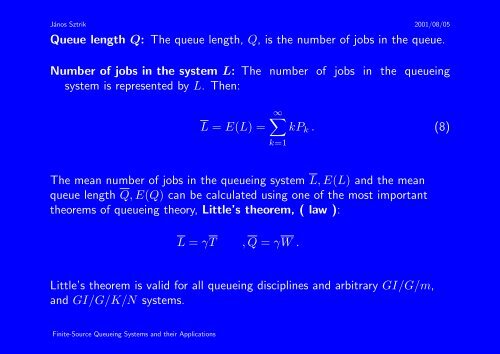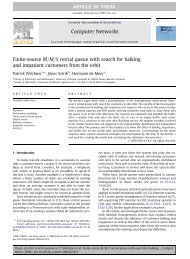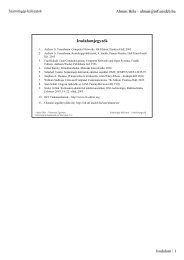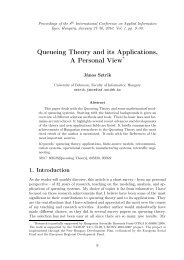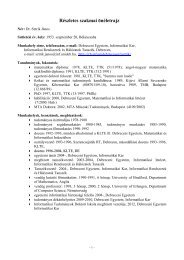Finite-Source Queueing Systems and their Applications
Finite-Source Queueing Systems and their Applications
Finite-Source Queueing Systems and their Applications
You also want an ePaper? Increase the reach of your titles
YUMPU automatically turns print PDFs into web optimized ePapers that Google loves.
János Sztrik 2001/08/05<br />
Queue length Q: The queue length, Q, is the number of jobs in the queue.<br />
Number of jobs in the system L: The number of jobs in the queueing<br />
system is represented by L. Then:<br />
L = E(L) =<br />
∞�<br />
kPk . (8)<br />
The mean number of jobs in the queueing system L, E(L) <strong>and</strong> the mean<br />
queue length Q, E(Q) can be calculated using one of the most important<br />
theorems of queueing theory, Little’s theorem, ( law ):<br />
k=1<br />
L = γT , Q = γW .<br />
Little’s theorem is valid for all queueing disciplines <strong>and</strong> arbitrary GI/G/m,<br />
<strong>and</strong> GI/G/K/N systems.<br />
<strong>Finite</strong>-<strong>Source</strong> <strong>Queueing</strong> <strong>Systems</strong> <strong>and</strong> <strong>their</strong> <strong>Applications</strong>


